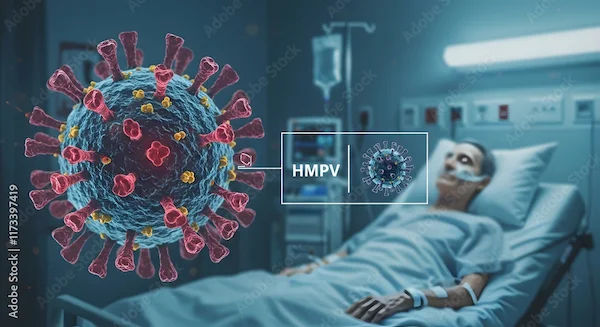Radiation Therapy: Separating Fear from Fact in Your Cancer Treatment
Discover the truth about radiation therapy. Learn how it works, debunk common myths, understand side effects, and explore modern, safe cancer treatments.

.webp?tr=q-80,f-webp,w-350,dpr-2,c-at_max 700w)
Introduction
A diagnosis of cancer is life-altering, and the treatment path can feel overwhelming. Among the various options, radiation therapy is one of the most common and effective, yet it is also shrouded in misconception and fear. Popular media and outdated stories have often painted a frightening picture of this precise medical technology, causing unnecessary anxiety for patients and their families.
This article aims to demystify radiation therapy by confronting the most persistent myths with clear, evidence-based facts. We will explore what modern radiation treatment truly involves, what you can realistically expect regarding side effects, and how technological advancements have made it safer and more targeted than ever before. Our goal is to replace fear with understanding, empowering you to have informed and confident discussions with your healthcare team about your cancer care journey.
What is Radiation Therapy, Really? A Quick Primer
Before we debunk the myths, let's establish a basic understanding. Radiation therapy (or radiotherapy) is a medical treatment that uses high-energy particles or waves, such as X-rays or protons, to destroy or damage cancer cells.
The Goal: Precision and Preservation
The primary objective is to deliver a precisely measured dose of radiation to a specific tumour or area of the body to eradicate cancer cells, shrink a tumour before surgery, or eliminate remaining cancer cells after surgery. The fundamental challenge—and the focus of modern advancements—is to maximise the dose to the cancer while minimising exposure to surrounding healthy tissues.
How Does Radiation Actually Work on Cancer Cells?
Radiation works by damaging the DNA inside cells. Cancer cells are particularly vulnerable because they divide and grow much more rapidly than most healthy cells. When their DNA is damaged beyond repair, they stop dividing or die. The body then naturally eliminates these damaged cells. It's a targeted attack on the disease, not a blanket assault on the entire body.
Top 10 Radiation Therapy Myths Debunked by Science
Let's tackle the most common fears head-on.
Myth 1: Radiation Therapy Will Make Me Radioactive and Dangerous to Others
This is perhaps the most widespread myth. The fear of isolating loved ones, especially children, causes significant distress.
The Facts on External Beam Radiation
For the most common type—external beam radiation—the answer is clear: you are not radioactive after treatment. The radiation beams pass through your body during the session, much like a diagnostic X-ray. There is no lingering radiation once the machine is turned off. You are perfectly safe to be around family and friends, including hugging and touching them.
The Exception: Understanding Temporary Internal Radiation (Brachytherapy)
Some treatments involve placing a radioactive source inside the body near the tumour (brachytherapy). In temporary brachytherapy, the radioactive material is removed after a short period, and any radioactivity disappears immediately. In permanent brachytherapy (e.g., tiny radioactive "seeds" for prostate cancer), the radiation is contained within a very small area and decays over time. Your medical team will provide specific safety instructions, but for most, the risk to others is minimal and very limited.
Health topic carousel:
Doctor's speciality: Oncology
Text: Consult a Oncologist for the best advice
Myth 2: Radiation Treatment is Extremely Painful, Like an X-Ray on Steroids
Fact: The treatment itself is painless. You will not see, feel, or hear the radiation beams during the session. The process is similar to getting an X-ray; you must lie still in a specific position, but you will not experience any discomfort from the radiation. Any side effects, like skin irritation, develop over time and are managed proactively by your care team.
Myth 3: The Side Effects Are Always Unbearable and Unmanageable
Fact: While side effects are a reality, they are highly variable and far more manageable than commonly believed.
Common vs. Rare Side Effects
Side effects are typically localised to the area being treated. For example, radiation to the head might cause a sore throat, while treatment to the pelvis might cause bladder irritation. Fatigue is a common general side effect. Modern techniques have drastically reduced the severity and scope of these effects compared to decades ago.
The Role of Your Care Team in Managing Symptoms
Your radiation oncologist and nurses are experts in preventing and managing side effects. They will provide you with detailed guidelines on skin care, diet, and medication to keep you comfortable throughout your radiation therapy for cancer.
Myth 4: Radiation Causes Cancer Elsewhere in My Body
Fact: The risk of developing a second cancer from radiation therapy is very low. The benefit of treating a current, life-threatening cancer far outweighs this small, potential risk. Advanced technology allows for extreme precision, sparing healthy tissues and thereby minimising this risk. This is a key discussion to have with your doctor, who can provide statistics relevant to your specific case.
Myth 5: If I Have Radiation, I Can't Also Have Surgery or Chemotherapy
Fact: Radiation therapy is often a key player in a multimodal treatment plan. It can be used:
Before surgery (neoadjuvant) to shrink a tumour.
After surgery (adjuvant) to kill any remaining cancer cells.
Concurrently with chemotherapy (chemoradiation) to make cancer cells more sensitive to radiation.
Your oncology team will determine the best sequence and combination of treatments for your specific diagnosis.
Myth 6: All Radiation Therapy is the Same Outdated Technology
Fact: The field has undergone a revolution. Today's treatments are light-years ahead of older methods.
Advanced Techniques: IMRT, IGRT, and Proton Therapy
IMRT (Intensity-Modulated Radiation Therapy) allows doctors to shape the radiation beams and adjust their intensity to match the tumour's exact shape, sparing nearby organs.
IGRT (Image-Guided Radiation Therapy) uses daily imaging to verify the tumour's position immediately before treatment, ensuring millimetre accuracy.
Proton Therapy uses protons instead of X-rays, which can deposit their energy more directly in the tumour with even less exit dose to surrounding tissues.
Myth 7: I Will Lose All My Hair Wherever I'm Treated
Fact: You only lose hair in the specific area where the radiation beam enters and exits your body. If you are not receiving treatment to your head, you will not lose the hair on your head. For example, a patient being treated for breast cancer will not experience scalp hair loss, though they may lose hair in the armpit area if it is within the treatment field.
Myth 8: Radiation Therapy Means a Long, Isolated Hospital Stay
Fact: The vast majority of external beam radiation treatments are outpatient procedures. Each session typically takes 15-30 minutes (with most of that time spent positioning you correctly), and you go home immediately after. This allows you to maintain your daily routine as much as possible.
Myth 9: It's a Treatment of Last Resort When Nothing Else Works
Fact: Radiation therapy is used for a wide range of purposes, both curative and palliative. It is often a first-line treatment for certain cancers (like early-stage laryngeal cancer). It is also highly effective for palliative care, relieving pain and other symptoms caused by cancer that has spread, such as bone metastases.
Myth 10: Alternative Therapies Are Safer and Just as Effective
Fact: While complementary therapies like acupuncture or meditation can be wonderful for managing side effects and improving well-being, there is no scientific evidence that alternative therapies alone can cure cancer. Radiation therapy is a proven, scientifically validated treatment. Relying solely on unproven alternatives can have serious, life-threatening consequences.
The Reality of Treatment: What to Actually Expect
Understanding the process can alleviate much of the anxiety.
The Simulation and Planning Process
Your journey begins with a "simulation" session. Using a CT scanner, your radiation therapy team maps the exact coordinates of your tumour and designs a custom treatment plan. You may receive small tattoo dots (tiny permanent marks) to ensure precise positioning for every session.
A Typical Treatment Session: Quick and Precise
When you arrive for treatment, therapists will help you into the exact position using your reference marks. The machine (linear accelerator) will move around you but will not touch you. The therapists leave the room but can see and hear you at all times. The beam is on for only a few minutes. You can breathe normally, and the session will be over before you know it.
When to Seek Expert Advice
If you are diagnosed with cancer and radiation therapy is suggested as part of your treatment plan, it is crucial to have an open dialogue with a radiation oncologist. They can provide details tailored to your specific situation, including the goals of treatment, the type of technology recommended, and the expected side effects of radiation therapy.
If you have questions or experience symptoms that concern you during treatment, do not hesitate to contact your care team immediately. For a second opinion or to connect with a specialist, you can consult an oncologist online with Apollo24|7 to discuss your options.
Conclusion
The landscape of cancer treatment is constantly evolving, and radiation therapy stands as a testament to that progress. The image of a dangerous, painful, and isolating treatment is a relic of the past. Today, it is a sophisticated, nuanced, and highly effective weapon in the fight against cancer. By separating the myths from the facts, we hope to empower you with knowledge. Understanding the reality of radiation therapy—its precision, its safety, and its critical role in healing—can transform fear into confidence. This knowledge allows you to be an active, informed participant in your healthcare journey, working collaboratively with your medical team toward the best possible outcome. Remember, your doctors are your best resource for addressing your unique concerns and crafting a treatment plan that is right for you.
Frequently Asked Questions (FAQs) About Radiation Therapy
How long does a typical course of radiation therapy take?
A full course of external beam radiation can vary widely, from a single session to several weeks of daily (weekday) treatments. The duration depends on the cancer type, stage, and treatment goal. Your oncologist will provide a specific timeline.
Can I work during radiation treatment?
Many people continue to work, especially if their treatment schedule allows for sessions before or after work. However, side effects like fatigue may require adjustments. It's best to discuss your situation with your doctor and employer.
What are the long-term side effects of radiation?
Long-term effects are possible and depend on the treatment area. They can include changes to the skin, fibrosis (thickening of tissue), or mild long-term fatigue. The risk of serious long-term effects is minimised with modern techniques. Your doctor will discuss potential risks specific to your treatment.
Is radiation therapy effective for all types of cancer?
No, radiation therapy is not effective for every cancer. Its effectiveness depends on the cancer's sensitivity to radiation, its location, and whether it has spread. It is a primary treatment for many solid tumours but is less commonly used for blood cancers like leukaemia.
How does proton therapy differ from traditional radiation?
Proton therapy is a more precise type of external beam radiation. While X-rays deposit energy along their path through the body, protons can be controlled to release most of their energy directly in the tumour, with virtually no exit dose. This can be beneficial for tumours located near critical organs.
Health topic carousel:
Doctor's speciality: Oncology
Text: Consult an Oncologist for the best advice




